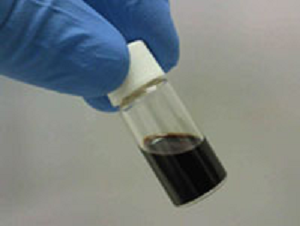A collaborative research project being conducted by RMIT, CSIRO and the Japan Science and Technology Agency is aiming to develop cheaper and less toxic solar cells using nanotechnology.

According to a news release from RMIT, the team is investigating the synthesis of semi-conductor inorganic nanocrystals using low-cost and abundant elements for printable solar cell applications.
Professor Yasuhiro Tachibana from RMIT’s School of Aerospace, Mechanical and Manufacturing Engineering says the industry’s focus is on cost reduction.
“The focus of photovoltaic industries has been to reduce material and production costs for photovoltaic panels,” Professor Tachibana said.
“As a result research into next generation solar cells has been of significant importance as it concentrates on developing novel low cost and low toxicity colloidal nanomaterials in order to meet industry requirements.”
The team is looking into alternative elements to synthesize nanocrystals which are being used as “ink”, allowing solar cells to be produced quickly and cheaply using a printer.
Currently toxic elements like cadmium and lead are used for colloidal nanocrystals synthesis.
“Synthesising entirely new nanocrystals was one of the most challenging tasks, since the initial reaction conditions are unknown,” says Dr. Joel van Embden from the School of Aerospace, Mechanical and Manufacturing Engineering, another one of the researchers on the team.
“We have focused on incorporating the elements, copper and antimony, into nanocrystals, as they are low-cost, low-toxic and earth-abundant,” he said.
In the course of their research the team has found a novel selective synthesis of tetrahedrite and famatinite copper antimony sulphide (CAS) nanocrystals. Both nanocrystals are suitable to absorb light in solar cells.
Professor Tachibana said these nanocrystal films could be fabricated on an electrode and applied to photovoltaic devices, thin-film thermoelectrics and transistors, at a cost which is relatively lower than other methods.
Meanwhile Professor Xinghuo Yu, Director of the RMIT Platform Technologies Research Institute, commended the team for the successful outcome of the research.
“The institute brings together multi-disciplinary teams of academics to undertake high-impact industry-focused projects to solve complex research questions of national and global significance,” Professor Yu said.
“The collaboration between the researchers at the School of Aerospace, Mechanical and Manufacturing Engineering and School of Applied Sciences has produced this successful outcome to benefit industry and the community.”
The research was recently published in the high-impact Journal of the American Chemical Society.













